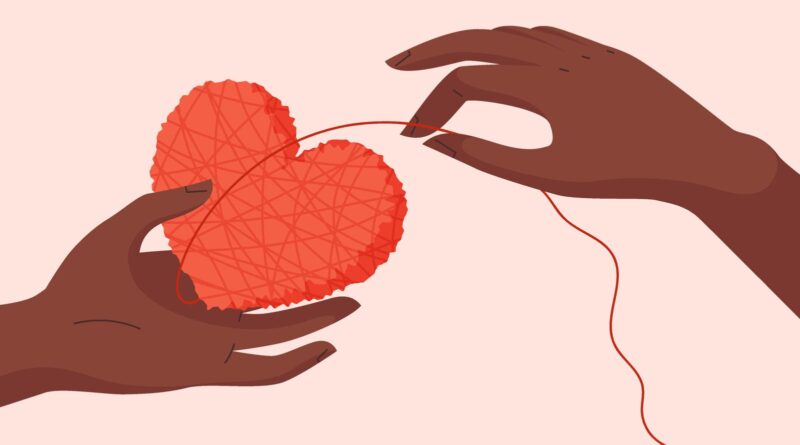Here are two things that decades of psychological research says will make your love resilient, even when life gets messy.
getty
Drs. John and Julie Gottman don’t overrely on lofty metaphors or romantic platitudes when they discuss exactly what it means to make a relationship work. They talk about houses.
As they explain in their chapter of the book Evidence-based Approaches to Relationship and Marriage Education, their “Sound Relationship House” theory is based on over 40 years of their research at the Gottman Institute.
The theory puts forward the emotional and behavioral pillars that distinguish stable, fulfilling relationships from those that crumble under strain — or “floorplans,” if you will. Each floor represents a psychological process that supports the next.
With them, the Gottman’s provide step-by-step instructions on how to build a relationship from the ground up. It may be a figurative framework, but recent research still suggests the theory to have structural integrity when it comes to helping couples survive rough patches.
Here are two of the most crucial steps to developing a love that’s built to last, according to the Gottmans’ research.
1. Build ‘Love Maps’
Every sound house must start with a well-developed blueprint. In terms of a relationship, that blueprint would be what the Gottmans call a love map: your understanding of your partner’s inner world.
Some partners might assume they can curate their love map based on the “fun facts” they’ve memorized about their partner — their coffee order, their preferred side of the bed, their favorite color — and call it a day.
Committed partners, on the other hand, consider their love map as necessary, intricate and ever-evolving. It’s their mental representation of the breadth and depth of their partner’s emotional landscape: their partner’s hopes, fears, stressors, dreams.
As the Gottmans explain in a study published in the Journal of Family Theory & Review, your love map is a measure of how well you know who your partner is on the inside, rather than just the façade they present to the world. This knowledge is what makes it possible for couples to power through life’s inevitable stressors with kindness and patience. Without it, you won’t be able to anticipate your partner’s needs; you’ll simply react to them.
If you know, for example, that family gatherings are a major and consistent source of anxiety for your partner — as well as why they came to be that way — then you are equipped to offer them comfort and reassurance before the stress even surfaces, in the exact way they need it. If you don’t, then this will only frustrate you; you’ll find yourself consistently annoyed as to why your partner seemingly “can’t function” or “starts floundering” around the holidays.
The most important point to remember is that curating a love map isn’t something you can “get done” in a single effort. Your partner is guaranteed to change over time, which means that your understanding of them should, too. You have to keep asking them questions, keep being curious and keep connecting with them, each and every day.
This is the only way to stay up to date with the ever-evolving partner you share your life with — and it’s also the only way to keep your relationship steady when life inevitably shifts the ground beneath your feet.
Knowing your partner’s emotional requisites on hard days, as well as their regular needs and wants on good ones, is a product of strong emotional awareness. And for healthy partners, who make love and respect the baseline, this emotional awareness serves as the foundation for their sound relationship house.
2. Turn Toward, Not Away (And Never Against)
Once couples have done the emotional work necessary to lay down a sturdy foundation, they then need to build the “walls” that make the relationship feel safe. These walls, according to the Gottmans, are built when partners continually “turn toward” one another.
Each and every day, both you and your partner will make countless small “bids” for emotional connection — even if you aren’t actually aware of it when you do so. These are the moments where you reach out (usually subtly) for attention, affection or understanding.
Every time you say, “Wow, come look at this sunset,” you’re making a bid for connection. Every time you sigh, “Ugh, you’ll never guess what my boss said today,” you’re making a bid for connection. Every time you ask, “Hey, come sit with me,” you’re making a bid for connection.
They’re easy to overlook, but they’re still lifeblood: according to the Gottmans’ research in Couple Observational Coding Systems, how partners respond to these bids can predict how long a relationship will last — and with shocking accuracy, too.
Specifically, they found that couples who stay happily married “turn toward” each other’s bids roughly 86% of the time, while those headed for divorce only do so about 33% of the time.
Turning toward your partner means what you likely think it does: responding positively to your partner’s bids for connection. All you have to do is acknowledge them, engage with them kindly and show interest.
Ignoring these bids, on the other hand, would be “turning away.” Responding to them with annoyance or hostility would be to “turn against” them. Neither of these responses have favorable outcomes — for the bidder, nor for the relationship as a whole.
Bids for connection, for the everyday couple, are nearly invisible to the naked eye. They hide in the most trivial of interactions — for instance, your partner saying something seemingly inconsequential, like, “I saw the funniest video today.”
If you were to turn toward their bid, you’d pause what you’re doing and say something like, “Oh yeah? Wanna share the joke?” If you turned away, you might’ve continued to scroll on your phone without responding. And if you’d turned against them, you would’ve sighed and said, “I’m busy right now.”
The outcomes of each of these interactions will accumulate over time. In this sense, the more partners turn toward each other, the safer they’ll feel around each other. The inverse applies, too: the more they turn away, the more dismissive they’ll start to see each other.
With this in mind, some partners might assume they need to be constantly available or perfect partners in every sense, all the time. But this isn’t realistic; in fact, it isn’t even necessary.
In reality, you just need to show up often enough, and with enough consistency. Do your best to be present, to respond with warmth and to make your own bids, too. If you both make this a habit, you’ll both feel safest within the “walls” of your shared home.
How sound is your relationship house, as it stands today? Take this science-backed test to find out: Relationship Satisfaction Scale









